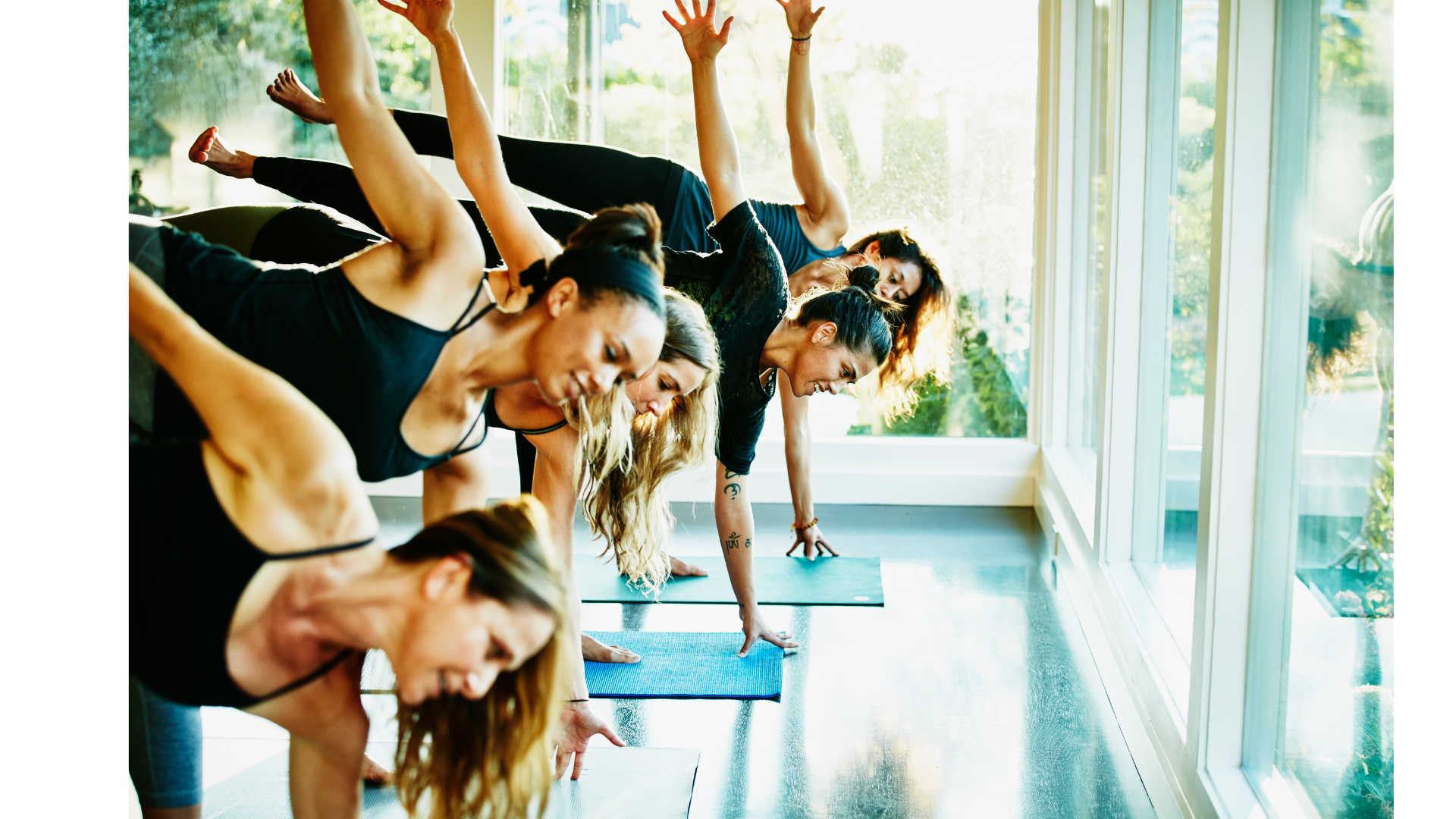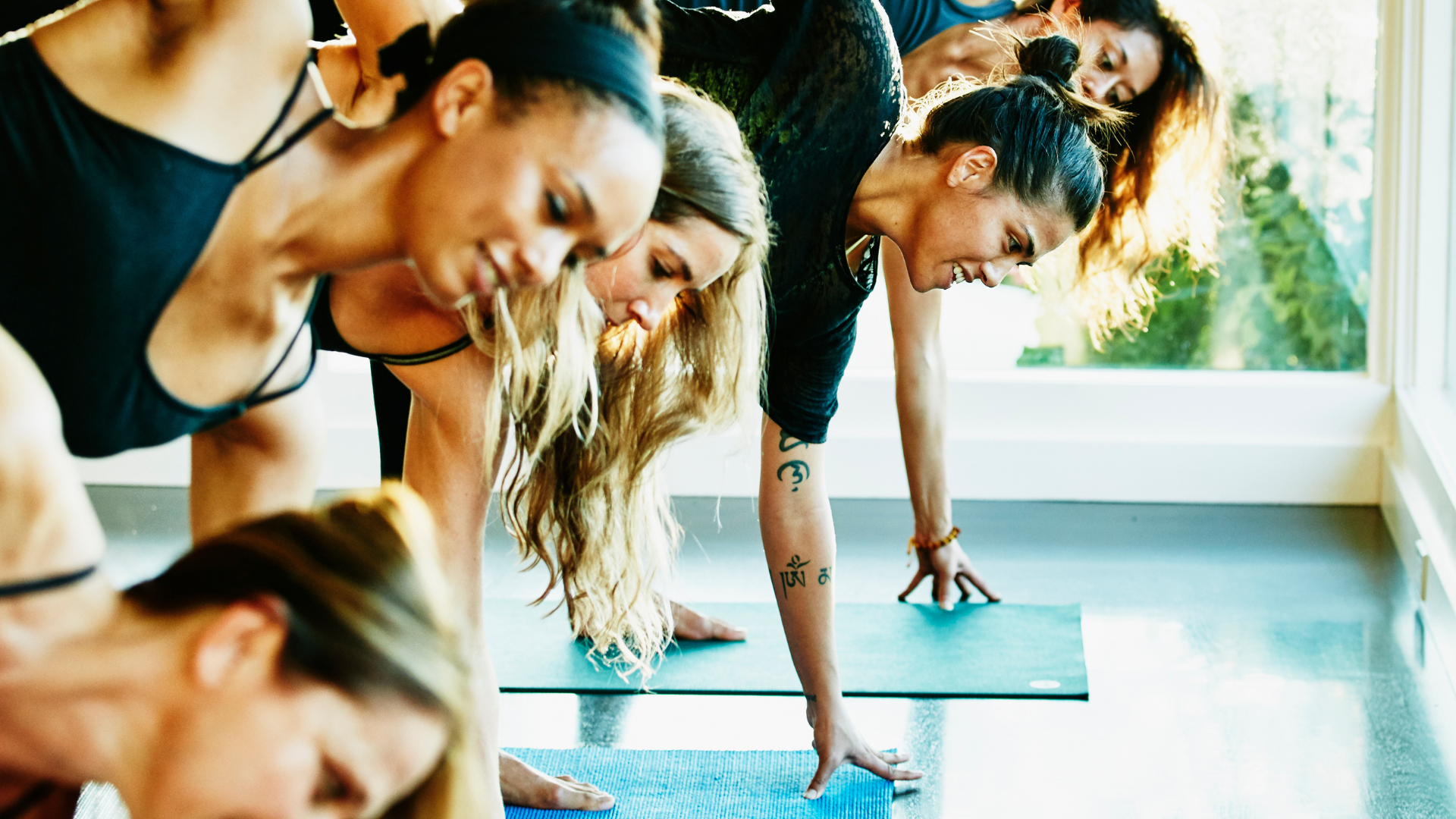Always Wobbling Through Half Moon Pose? These 5 Tips Will Change That.

(Photo: Thomas Barwick | Getty)
Have you ever tried to come into Half Moon Pose and felt like you’re hovering in chaos? Almost as if you’re halfway between flying and falling? Same.
Or maybe you’ve seen the James Brown reel on social media in which he’s awkwardly hopping on one foot with the caption, “Me trying to hold my balance in Ardha Chandrasana”? It captures that exact sensation most of us experience in the balancing pose of wanting to be free but gripping tightly to avoid falling over.
The thing is, Half Moon Pose can and should bring a feeling of suspension. That’s what happens when you manage to walk the line between effort and ease (sthira and sukha). Yet more often than not, I see students—myself included—launching themselves forward into takeoff and trying to figure it out once you’re already there. But you’re usually unable to recalibrate by then because instead of working from a solid foundation, you’re overcompensating, usually by attempting to muscle your way through the pose with clenched jaws, wobbly ankles, and no sense of stability.
It looks like balance. But it’s really just struggle disguised as shape. Let’s change that.
5 Things That Bring Stability in Half Moon Pose
Most Half Moons unravel because the body is reaching in too many directions without enough stabilizing actions to tether it all together. The bottom foot and ankle are shaky. The lifted leg is sinking instead of lifting. The chest is collapsing forward.
The interesting thing is it usually isn’t a lack of strength or flexibility that causes this. It’s a lack of clarity. Where should there be effort? Where could there be ease? Where should your attention actually go?
This changes when you start to build Half Moon Pose from the ground upward. This creates strength and stability. In turn, that means the pose can become less about flailing and figuring it out mid-flight and more about creating the conditions for a steady take off so you can fly with surety.
After practicing and teaching this pose for almost two decades, what I know for certain is that when you prioritize stability and have clear action steps for doing so, that feeling of freedom comes naturally. You don’t just “do” Half Moon Pose. And you can’t force it. You build toward it.
Following are some of the less-complicated poses that I practice and teach prior to Half Moon to prepare the body and emphasize its key actions. To shift your Half Moon Pose from wobbly to stable, start with the following stabilizing actions to help you feel like you’re flying instead of falling:
1. Stabilize Your Standing Leg
Everything about your Half Moon Pose begins with the steadiness of your standing leg. As you attempt to balance on it throughout the pose, press firmly through your foot—specifically, through the center of the heel and ball of the foot. Once you have that grounding, lift your inner arch, firm the ankle, and draw the kneecap upward.
Practice or teach the stabilizing actions of the standing leg early in the practice so you can find your foundation. You can do this—or ask students to feel this—in the following poses, which set the groundwork for also experiencing this in Half Moon Pose:
Mountain Pose (Tadasana)
Warrior 2 (Virabhadrasana II) in the back leg
Extended Side Angle (Utthita Parsvakonasana) in the back leg
Tree Pose (Vrksasana) in the standing leg
Pro Tip: Use a block under your bottom hand, especially if straightening your standing leg in Half Moon is still a work in progress.
2. Hug Your Outer Hip In
To further stabilize your body, draw the outer hip of your standing leg inward to steady the pelvis. You can do this by firming the glutes and trying to squeeze them toward the inner thigh. Because the muscles of the outer hip connect the legs to the trunk, engaging them in this manner stabilizes both your balancing leg and your entire core. Don’t let this engagement slack at any time during the pose.
Once the outer hip understands this action, you’ve got access to the sort of steadiness that enables you to feel as though you’re moving outward in all directions with the rest of your body.
Understanding the stabilizing action of the outer hip and buttocks in certain poses can help you create the steadiness that you need so your upper body can experience the spaciousness and freedom that you want. Focus on this in these poses:
Extended Side Angle in the bent front leg
Tree Pose in the standing leg
Triangle Pose (Trikonasana) in the straight front leg
3. Work (Not Just Float) The Lifted Leg
A balancing pose is not a sculpture. What I mean is that the lifted leg isn’t decorative, it’s engaged. As soon as the leg is no longer actively involved in lifting, it becomes dead weight that pulls you downward.
Instead, you want to actively lift the inner thigh, firm the quads, push through the heel and ball of the foot, and don’t forget to spread your toes wide.

4. Press Through Your Fingertips to Find The Hand and Chest Connection
Don’t forget about the lower hand that’s touching the floor or a block. The hand isn’t just something to lean on. It’s actually a tool you can use to help steady, lift, and open the entire midsection of the body.
The lower hand is more than a weight-bearer—it’s a communicator. Pressing down through the fingertips allows that engagement to rebound up through the arm, which helps you broaden through the collarbones and open across the chest. There’s also a relationship between your lower hand and the upper back. When the arm engages, the chest can lift, which is another stabilizing action for your body.
You can better understand how pressing the bottom hand down opens the upper back and chest in a pose by exploring this in poses that don’t require you to balance. This allows you to place some attention on the effects of the hand action without worrying about falling out of the pose.
Extended Side Angle
Triangle Pose
5. Focus on What You Feel, Not Just See
Whether you’re a student struggling with your balance or a teacher cueing students into Half Moon Pose, skip the poetry if it muddies the message. Phrases such as “shine your heart” or “float through your fingertips” might sound pretty, but they often don’t provide enough clarity, direction, or clear instruction. Try these cues instead, which provide clear action steps your students can work on as they embody the pose.
- Press the standing foot down and lift up from the inner thigh.
- Draw your outer hip in, like you’re hugging it toward your inner thigh.
- Extend through the lifted leg—heel back, toes wide, ball of the foot reaching away from the head.
Be sure to emphasize these key actions using the same cues along the way in more foundational poses, such as the below, so by the time someone comes into Half Moon, they’re already familiar with them.
Mountain Pose
Extended Side Angle
Tree Pose
Triangle Pose
Balance In Half Moon Pose Isn’t Fragile. It’s Earned.
The myth of Half Moon is that it’s a pose you can just take off into and expect to fly. But my experience? It’s a work in progress. It’s technical. It takes organization, attention, and a willingness to slow down in order to lift off.
When you make space for all of that, it’s a pose in which you can feel suspended and not just like you’re trying not to crash. It’s a moment to expand in all directions and feel fully supported as you do so.
So the next time you rise into Ardha Chandrasana, don’t try to figure it out once you’re already there. Prepare for it, build for it. And then—with practice—you’ll feel that balance between effort and ease.